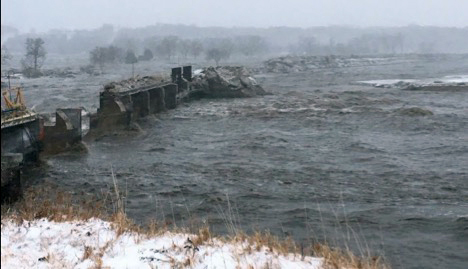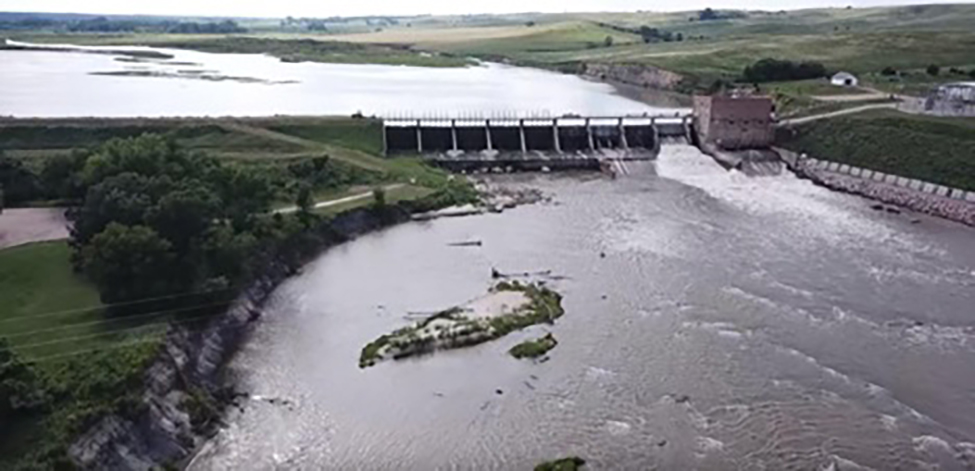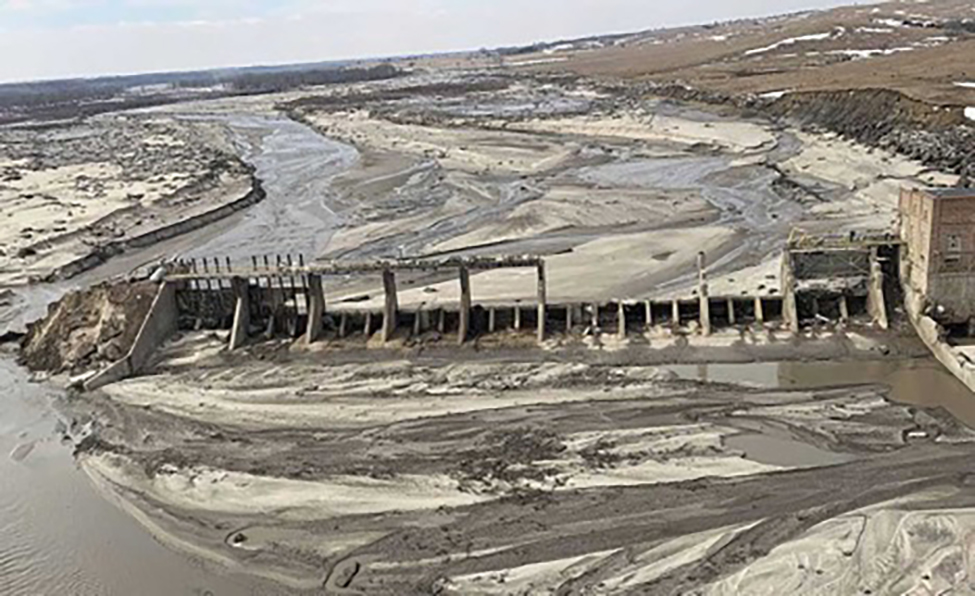
On March 14, 2019, the Spencer Dam on the Niobrara River in northern Nebraska failed during a major flood and ice run. A torrent of water, ice and debris tore through the dam’s dike and the Highway 281 embankment, destroyed several bridges and buildings, and claimed one life. Colorado State University Civil and Environmental Engineering Professor Robert Ettema served on an independent panel that investigated the failure, to determine why it happened and how to prevent it from happening again.
Ettema, who researches water engineering and cold-region issues, was appointed to the panel by the Association of State Dam Safety Officials. Over the past year, the panel reviewed data and conducted interviews to identify the physical, human and organizational causes for the dam’s failure. The ASDSO released the panel’s findings in a public report in April.

The panel found the 92-year-old dam was well maintained and there was nothing the operators could have done to prevent its failure. However, they outlined several contributing factors that, if amended, could help prevent other dam failures.
“More needs to be known about how ice forms and breaks up on rivers like the Niobrara River,” said Ettema, noting his biggest takeaway from the investigation.
A bomb cyclone hit northeast Nebraska March 12, bringing rain that inundated the snowpack and frozen ground. The Niobrara River’s ice cover broke apart rapidly, sending massive ice rubble toward the dam. Ice chunks as large as 2-feet thick by 20-feet wide and weighing more than two tons clogged the dam’s open gates and spillway stop logs. Floodwater overtopped the dike and eroded its downslope, eventually forming two large breaches and wreaking havoc downstream.
The report concludes that engineers working on rivers susceptible to severe ice runs should design infrastructure to withstand these extreme weather events, and that more research is needed to inform design.

“More research needs to be done on the dynamic nature of rivers in cold weather regions, including ice run formation, frequency, movement, damage, and how infrastructure like dams should be designed, maintained and operated to withstand ice run loading,” the report states.
Colorado, struck by the same bomb cyclone, also would benefit from this type of research.
“We, like Nebraska, live in one of the most dynamic climate regions on the planet,” Ettema said.
An overlooked pattern
Spencer Dam’s 2019 devastation wasn’t the first time ice had battered the structure. Ice contributed to the dam’s 1935 failure and damaged its gates and powerhouse in 1960 and 1966. Knowing the dam’s complete history might have helped its owner, the Nebraska Public Power District, and state regulator, the Nebraska Dam Safety Program, prepare for ice runs, but records were lost, unorganized or unavailable, the report said.
Though the dam regularly passed inspections, inspections aren’t enough, the panel found. They determined safety evaluations should include a review of key records and past incidents, which owners should maintain. Reviews also should assess and watch for modes of potential failure.
“Latent vulnerabilities such as performance during ice runs or floods are not addressed in the state’s inspection reports,” the panel found.
The panel believed the dam’s owner and regulator underestimated the potential for life-threatening flooding in the event of a dam failure and recommended periodic assessment of downstream areas for appropriate hazard classification.
“For dams with people at risk downstream, Emergency Action Plans should be developed and exercised,” they said in the report.
Ettema and the three other panelists plan to present their findings at conferences and write an article for the International Journal on Hydropower & Dams, so other engineers can benefit from the investigation. The other panel members are Mark Baker, principal at Dam Crest Consulting; Martin Teal, senior vice president of WEST Consultants; and John Trojanowski, president of Trojanowski Dam Engineering.